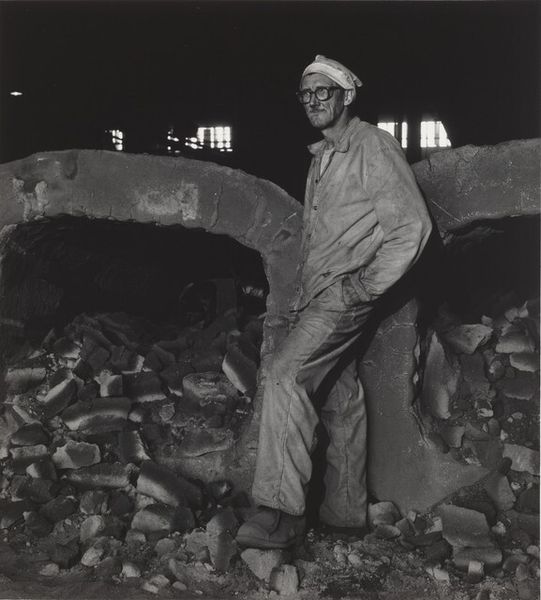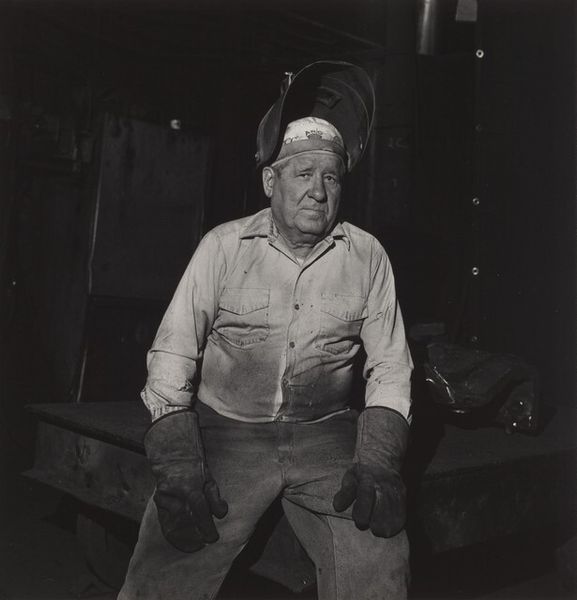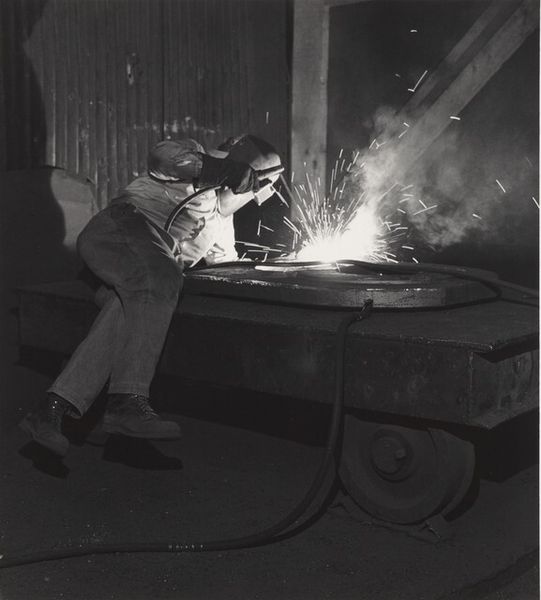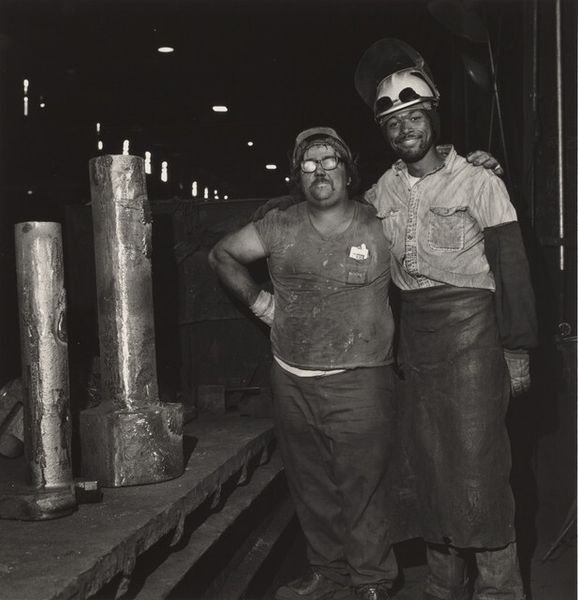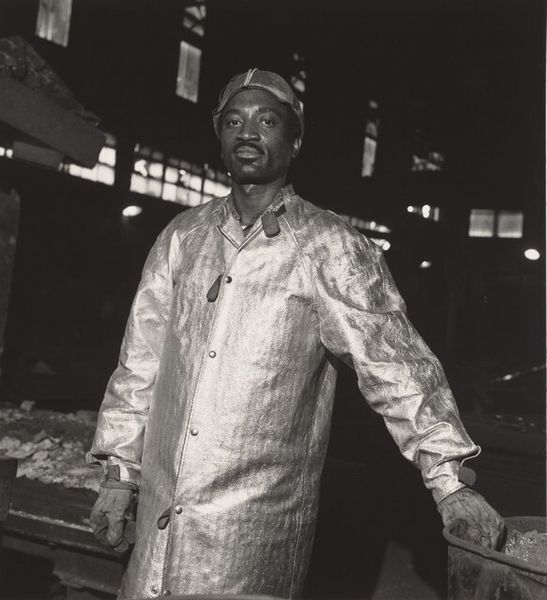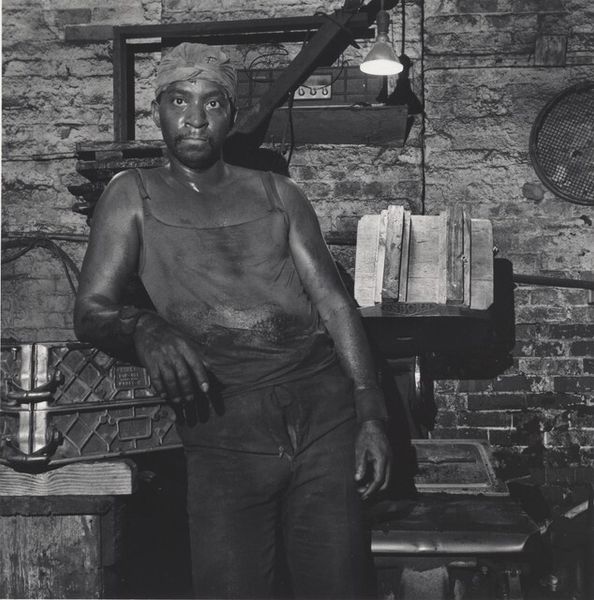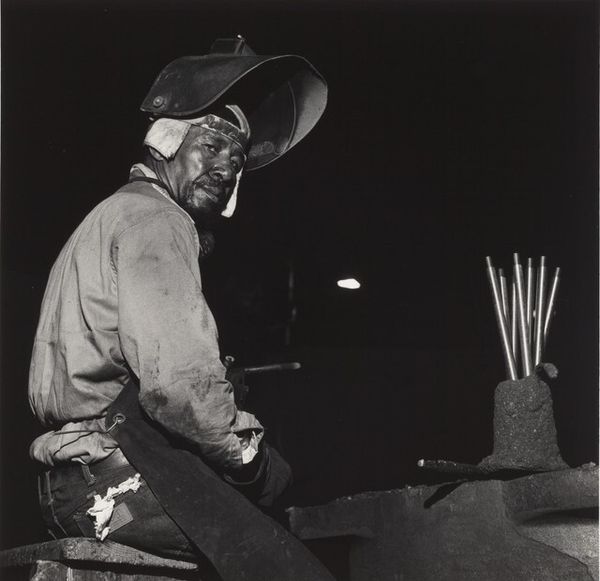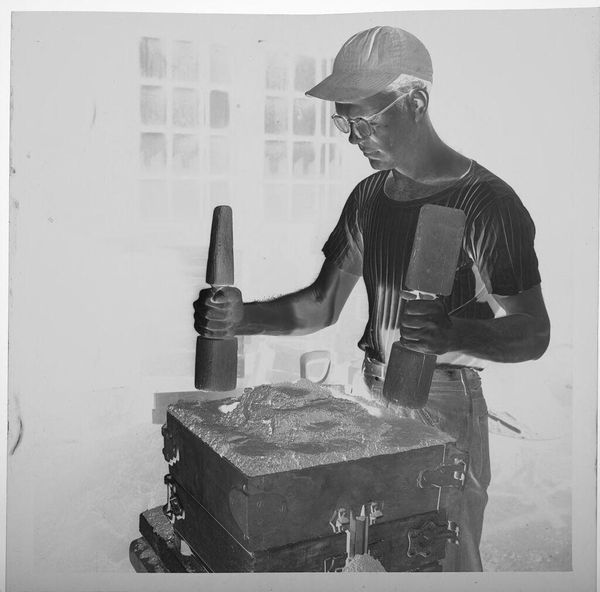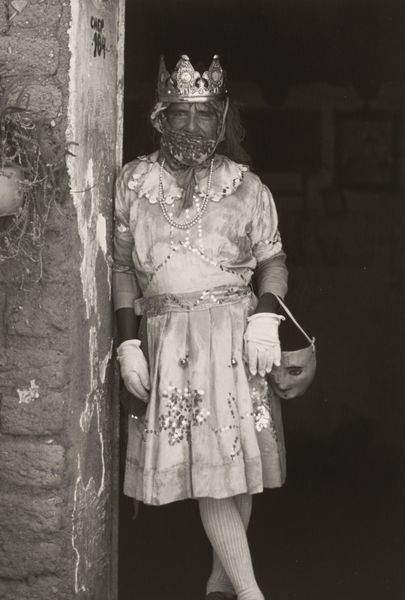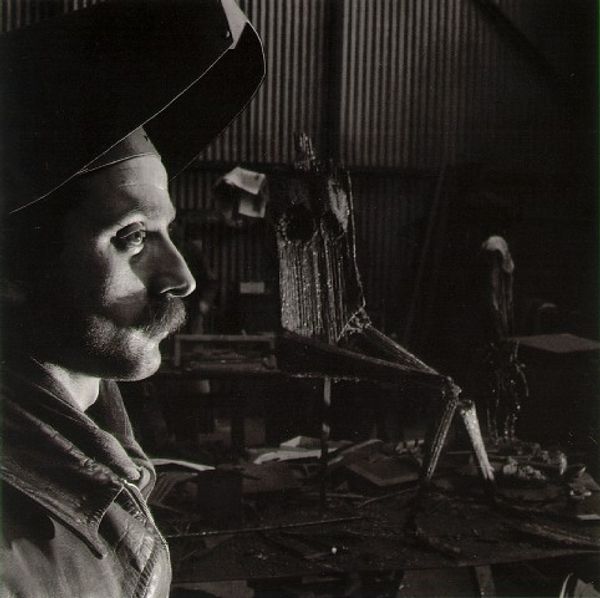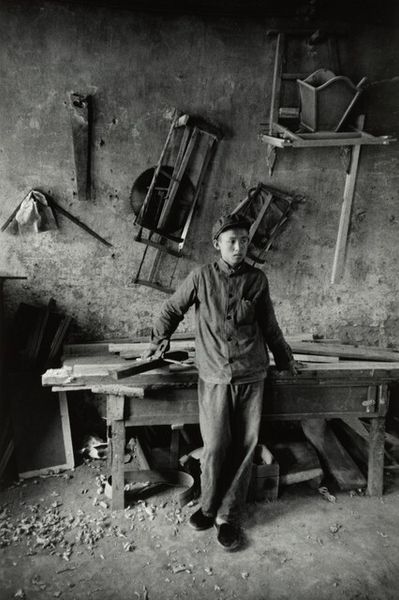
photography, gelatin-silver-print
#
portrait
#
black and white photography
#
social-realism
#
photography
#
historical photography
#
black and white
#
gelatin-silver-print
#
monochrome photography
#
ashcan-school
#
monochrome
#
realism
Dimensions: image: 17.7 x 17.7 cm (6 15/16 x 6 15/16 in.) sheet: 25.3 x 20.3 cm (9 15/16 x 8 in.)
Copyright: National Gallery of Art: CC0 1.0
Editor: Here we have Milton Rogovin's gelatin silver print, *Atlas Steel Casting*, from his *Working People* series, created between 1976 and 1977. The subject's gaze is really captivating. I'm curious, how do you interpret this work within the broader context of labor and representation? Curator: Rogovin's photography transcends a simple portrait; it’s a crucial document of labor, class, and race within late 20th-century America. Considering the historical backdrop of deindustrialization and its disproportionate impact on working-class communities of color, how does Rogovin's depiction challenge or reinforce existing power structures? Editor: That makes me think about his position as a photographer—was he an insider or outsider to this community? Curator: Precisely. Rogovin, an optometrist turned social documentarian, wasn't merely taking photos; he was engaging in a form of activism. He aimed to give visibility to those often unseen and unheard. The gaze of the subject, as you mentioned, becomes an act of resistance, demanding recognition and dignity. Do you think the visual language he employs—the directness, the use of black and white—contributes to this message? Editor: Absolutely. The black and white simplifies everything to form and feeling. It removes any distraction, bringing forth honesty, grit, and the human experience at its rawest. I feel I can truly appreciate how it makes a political statement simply by portraying someone's humanity with respect. Curator: Yes! Rogovin offers more than just an image; it's a challenge to societal indifference and historical amnesia, encouraging viewers to confront the human cost of economic shifts and question who holds the power to define whose stories are told. It moves us to rethink whose experiences constitute American history. Editor: This has completely changed how I see the photograph, recognizing it as a political act as much as a portrait. Curator: And it illustrates how visual art captures personal stories within much larger movements.
Comments
No comments
Be the first to comment and join the conversation on the ultimate creative platform.

